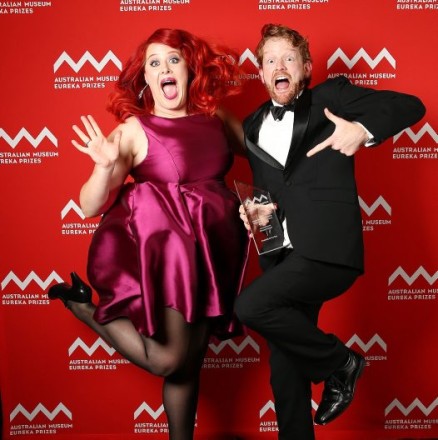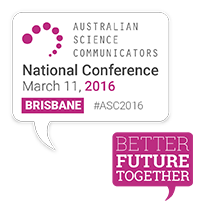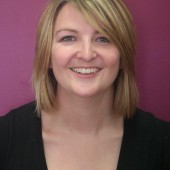Thank you to Bianca Nogrady for this article.
It’s fitting that, at the so-called Oscars of Australian science, your entrée is described as a ‘gastronomical geode’ that must be excavated from a box of edible dirt.
As amusing as that was, it was but a minor moment in a night that delivered plenty of rousing cheers for the science communication community. The highlight was ASC’s very own Renae Sayers, whose Fireballs In The Sky citizen science project rightly earned her and colleagues at Curtin University the inaugural Department of Industry, Innovation and Science Eureka Prize for Innovation in Citizen Science. In true science communicator fashion, Renae delivered the most passionate and entertaining thank you speech of the evening.
Another highlight was, as always, the Eureka prize for science journalism, which was won this year by Wain Fimeri, Sonya Pemberton, Dr Derek Muller and Steve Westh for their documentary Uranium – Twisting the Dragon’s Tail. Sonya Pemberton took the opportunity on stage to call for greater support of science journalism and science communication in Australia, although she was nearly drowned out by the infernal music designed to usher excessive talkers from the stage.
The fabulous astrophysicist Dr Lisa Harvey-Smith from CSIRO took home the Department of Industry, Innovation and Science Eureka Prize for Promoting Understanding of Australian Science Research. She also earned the greatest number of celebratory tweets, which is equal testament to her popularity and reach.
And the winners and runners-up of the two University of Sydney Sleek Geeks Science Eureka Prize showed that the future of science communication is in capable hands. Hayden Ingle from Banksmeadow Public School channelled David Attenborough in his documentary on The Bluebottle and the Glaucus, which took the primary school prize. Claire Galvin and Anna Hardy from St Monica’s College Cairns, undertook a painstaking reconstruction of the animal skeletons extracted from owl pellets to explore their significance in conservation and ecological studies, in Owl Pellets: A Postal System to Scientists.
It was a night to remember, and not just for the eye-watering pink-and-purple colour scheme of the Town Hall lighting, or the smoked potato masquerading as a dragon’s egg in the edible dirt.
The science communication community was out in force and in finery, filling the room with familiar faces and strong voices. The pomp and ceremony, and several speakers, also sent a clear message that Australian science are alive and kicking, despite best political efforts to the contrary.
All the 2016 Eureka Prize winners are listed here.
Image credit: Australian Museum Eureka Prize



